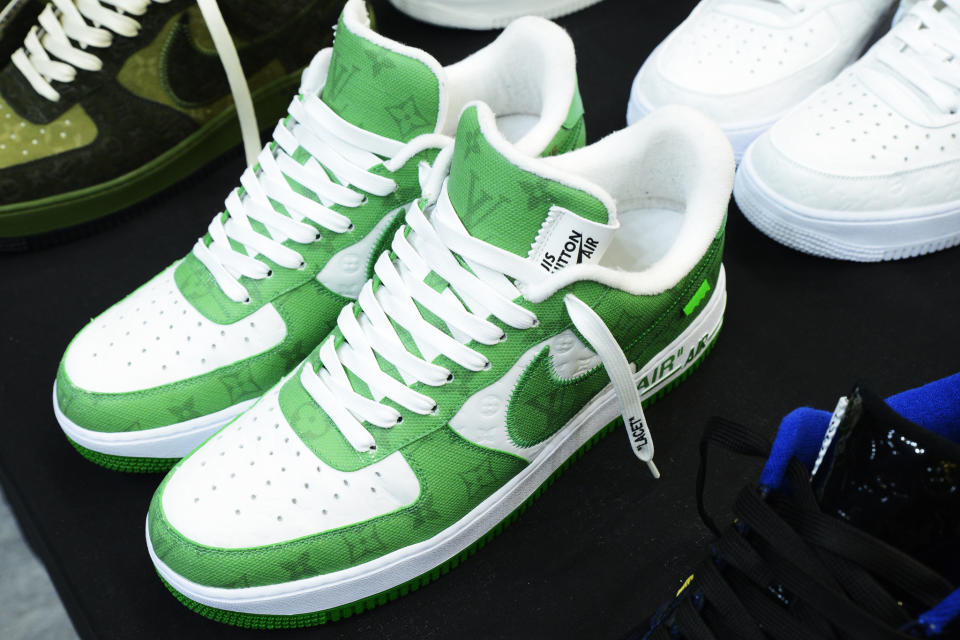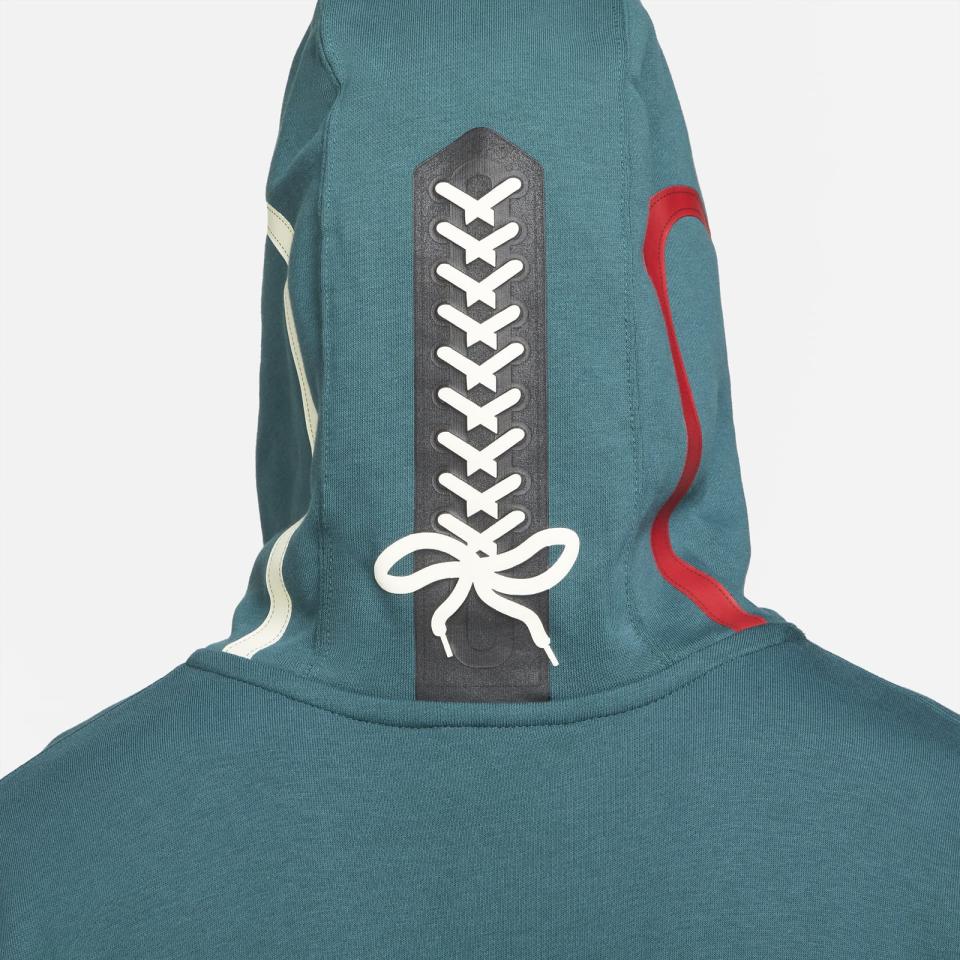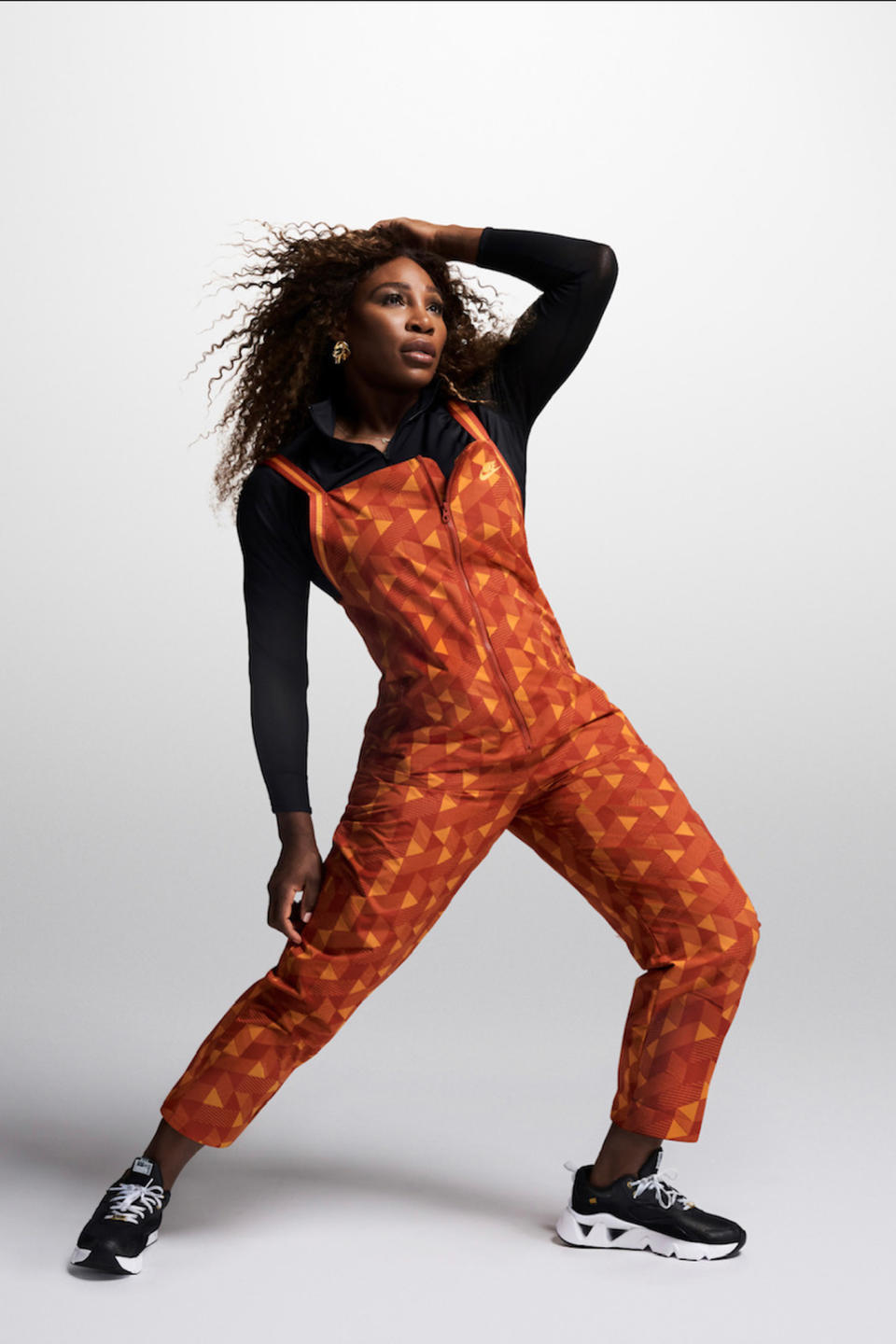WWD Honors: Nike, Best-Performing Fashion Brand, Large Cap
- Oops!Something went wrong.Please try again later.

Consumer lockdowns, shuttered stores, a pause on professional and amateur sporting events and serious supply chain woes — that’s what John Donahoe faced a mere two months after he took over the top post at Nike Inc. in January 2020.
The one-time chief executive officer of eBay, his appointment as only the fourth CEO in Nike’s history may have seemed an odd choice at the time. But it turned out to be fortuitous, since it is the company’s strong digital business that helped it navigate through the pandemic and achieve both top- and bottom-line gains in its last fiscal year.
More from WWD
At the annual shareholders meeting earlier this month, Donahoe said the company looked at the challenges of the pandemic as an opportunity to excel. “These are times when strong brands can get stronger, and that’s what Nike did this past year,” he said. “Over the course of this past year, we again delivered the strong results our shareholders have come to expect from Nike. Our extraordinary financial performance included double-digit growth and Nike’s highest EBIT margin in recent history. The power of Nike is our consistency and the strength of our global portfolio as all four of our geographies delivered growth. And so despite volatility all around us in fiscal 2021, Nike grew our leadership position. We extended the separation between us and the rest of the pack.”
For that reason, Nike is this year’s recipient of the WWD Honor for Best-Performing Fashion Brand, Large Cap.
One of the primary efforts in sustaining the brand’s growth, he said, is Nike’s Consumer Direct Acceleration strategy, a digitally focused business strategy unveiled four years ago that increases investment in e-commerce and technology and highlights direct-to-consumer efforts.
And it’s paying off. Matthew Friend, Nike’s chief financial officer, said at the annual meeting that the Nike Direct business is now approaching 40 percent of the company’s total sales of $44.5 billion last year, with digital representing 21 percent of total revenue for the Nike brand, a milestone the company hit three years ahead of plan.
By fiscal 2025, Nike expects its business to be 60 percent direct-to-consumer with 40 percent deriving from digital. Part of this is the plan to open 200 more compact, digitally enabled stores in the U.S. and abroad. Nike unveiled two in the Boston area in August.
In the first quarter ended Aug. 31, Nike’s direct-to-consumer sales rose 28 percent to $4.7 billion, thanks to strength in its brick-and-mortar fleet, whose results exceeded pre-pandemic levels. Digital sales also increased 29 percent during the quarter with North American digital sales up 43 percent over the first quarter of fiscal 2021. Donahoe said the firm expects the majority of its revenue growth to come from digital sales in fiscal 2022 as well.

“Today, we’re in a stronger position relative to our competition than we were prior to the pandemic,” he said during the earnings call. “Why? Because the changes happening in the market worked in our favor. Consumers’ shift to digital that might have taken five years will now only take two years. That plays to Nike’s advantage. And our Consumer Direct Acceleration strategy is capitalizing on this marketplace transformation. We know that when we get to the other side of this, we’ll be in even stronger shape. We’ll be more agile, more direct and more digital.”
Like its rivals Under Armour, Adidas and New Balance, Nike continues to play up the phygital through its Nike and Snkrs apps. Aside from offering exclusives, special offers and other incentives, the apps can generate a trove of information about purchasing preferences and trends. They’re also used for exclusive drops and help to streamline in-store pick-up. In reporting its most recent earnings last month, Donahoe noted, “Online to offline is becoming second nature,” referring to the halo effect of e-commerce on local communities.

Courtesy Photo
Despite that, executives are reportedly wary of Snkrs shoppers turning to other brands due to a lack of fairness for new releases and limited drops, according to internal materials that were reportedly obtained by Complex a few weeks ago. The prevalence of bots is another factor that is deterring some individual users from sneakerhead apps.
Last spring, a sneaker resale business was the source of another headache at Nike. Ann Herbert, a 25-year veteran with the company, stepped down as vice president and general manager of North America. Her departure followed a Bloomberg Businessweek story, “Sneakerheads Have Turned Jordan’s Into a Bona Fide Asset Class,” featuring her son Joe’s resale business. He was said to have used his mother’s credit card to buy sneakers for his company, West Coast Streetwear. Before the pandemic, the Gen Zer cleared $200,000 in revenue, according to the article.
But Nike shows no signs of scaling back on exclusive drops. This month, the company joined forces with JD Sports and Pokémon Go’s maker, Niantic, to drive in-store traffic in Europe for exclusive product inspired by the mobile game. To mark Dia de Muertos, Nike and the Jordan Brand are rolling out footwear with coordinating apparel that draws upon the strength of families.

Established as the brand is in traditional sports and more recently emerging ones including esports, Nike has also gotten a bump in brand recognition from being an in-demand label in collectibles, a field that has surged during the pandemic. A pair of signed red and white Nike Air Ships that had been worn by Michael Jordan in his debut 1984 season with the Chicago Bulls recently sold at Sotheby’s for a record $1.47 million. That helped boost the five most valuable Michael Jordan items to nearly $5 million, according to statistics from Wette.de.
Last month, Nike earned high marks from a survey of 10,000 teenagers in the U.S. In Piper Sandler’s biannual survey. Nike was the apparel brand of choice for male and female respondents appealing to 27 percent of the teenagers. Clothing was the top-ranking category for purchases followed by food.
Nike also had a stronghold on 2020 global market share of apparel and footwear based on retail value, ranking fourth behind Inditex, Fast Retailing and H&M, respectively, according to Sourcing Journal’s recent report, “Repeat, Regain or Renegotiate? The Post-COVID-19 Future of the Apparel Industry.” Nike led the top footwear companies by global market share last year followed by Adidas, Skechers USA, VF and Asics.

Courtesy of Nike
But despite its popularity, Nike is not immune to the supply chain issues haunting American businesses.
Over the past decade or so, the company has substantially reduced the number of suppliers it uses, with Vietnam, China and Indonesia being key pockets. That said, when government officials in Vietnam forced factory shutdowns due to the coronavirus crisis, Nike said earlier this month that it faced 10 weeks of lost production. And returning to full production runs could take several months. Increased consumer demand, shipping delays, and shortages for shipping containers and truck drivers are also complicating the global shipping problem.
In September, the supply chain problems led the company to lower its guidance for fiscal year 2022 to mid-single-digit growth from low-double-digit growth. But while the situation is concerning, analysts believe Nike has the wherewithal to weather the storm.
Jane Hali & Associates, an investment research firm, said that although it remains cautious because of the “supply chain headwinds,” it expects the upcoming Olympics, back-to-school, the continued return to sports and consumer interest in wellness and the outdoors to be a boost to Nike’s business in the future as the “hype” around the Nike brand and its brother labels, Jordan and Converse, continues.
While the sneaker giant continues to play up its commitment to diversity through advertising, social media, community events and in-house efforts, some shareholders called for greater transparency at this month’s annual meeting. Following the police murder of George Floyd in May 2020, Donahoe wrote a letter to employees the following month that noted among other things, “We know Black Lives Matter. We must act and we must act to help create lasting change that addresses the systemic racism in our society.” He also vowed to invest millions in Black communities in the U.S.
But earlier this month at the shareholders meeting. representatives from the nonprofit shareholder advocacy group “As You Sow” challenged the company for greater transparency and statistics about pay and hiring along gender and racial lines. In recent years, Nike has faced allegations of harassment and discrimination related to gender, race and gender identity. Three years ago, longtime executive Trevor Edwards exited as president of Nike Inc.’s flagship brand following allegations of misconduct at the company.
In its most recent proxy statement with the Securities and Exchange Commission, Nike deemed the As You Sow-suggested diversity proposal “unnecessary because the information Nike already publicly disclosed with respect to our initiatives and diversity metrics is responsive to the essential objective of the proposal and provides our shareholders with meaningful insight into our progress in this areas.”
As part of its Diversity, Sustainability and 2025 Goals report that was unveiled last year, the company is seeing progress. Representation of racial and ethnic minorities at the vice presidential level in the U.S. increased by eight percentage points last year to 29 percent. And last year, women comprised 49.5 percent of the company’s entire workforce, including 43 percent of director-level jobs and above. Racial and ethnic minorities in the U.S. accounted for 27 percent of leadership positions at the director level or higher in 2020.
Nike has built upon the Serena Williams Design Crew, a team created a few years ago at the pro tennis player’s request to establish more opportunities for designers of color. Earlier this summer, the group launched the first Serena Williams collection. During a recent fireside chat, Donahoe spoke of the importance of building another community at Nike — the Latino and Latina group through representation and career development.
Sign up for WWD's Newsletter. For the latest news, follow us on Twitter, Facebook, and Instagram.

